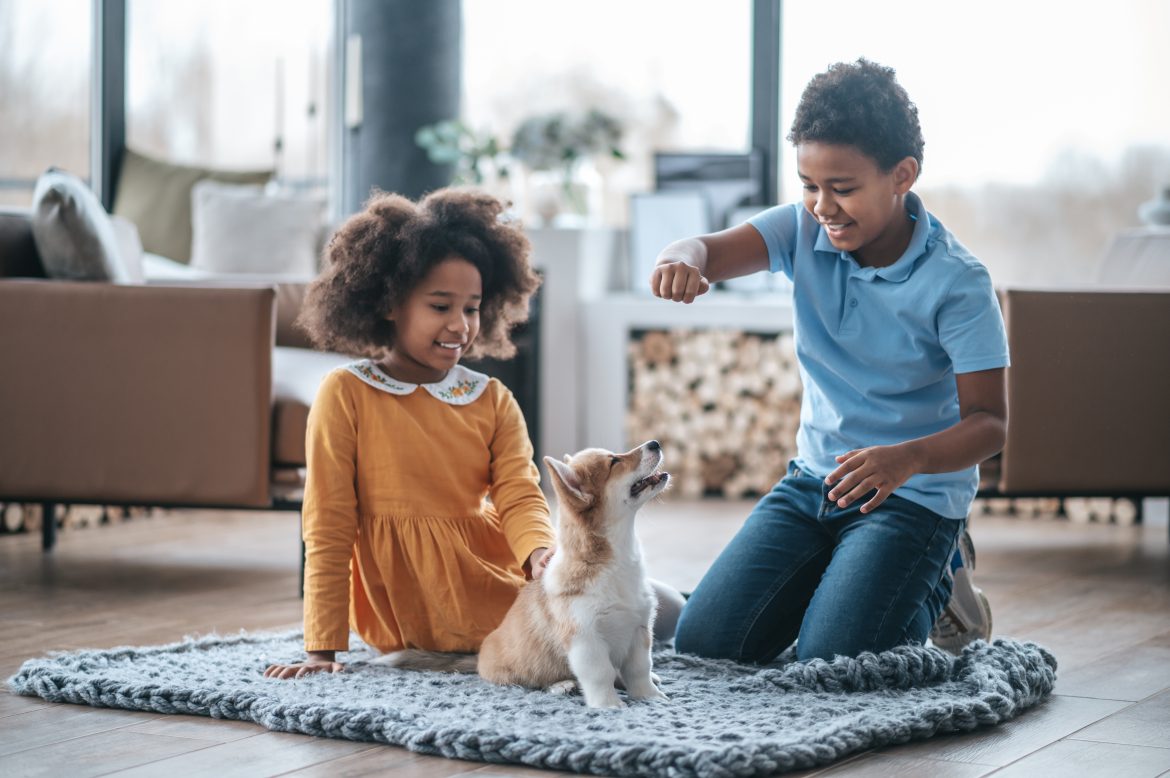Bringing a pet into a family with children can be one of the most rewarding decisions you make. Pets bring joy, comfort, and companionship, while children gain valuable life lessons in empathy, care, and responsibility. However, having children and pets under the same roof also requires guidance. Children need to understand how to care for animals safely, respectfully, and consistently.
Teaching kids to interact safely with pets protects everyone involved, and it also builds a foundation of trust that can last a lifetime. This guide will walk you through how to help children learn both responsibility and safety when living with animals, while strengthening the beautiful bond between them.
The Benefits of Growing Up With Pets
When children and pets grow up together, these children often develop stronger emotional and social skills. Numerous studies show that pets can help children build:
- Empathy and compassion: Caring for a pet teaches kids to recognize the needs and emotions of others.
- Confidence and self-esteem: Completing tasks like feeding or walking a pet gives children a sense of accomplishment.
- Routine and structure: Pets depend on consistent care, which helps children learn about daily responsibilities and time management.
- Reduced stress and anxiety: Interacting with animals can lower stress levels and help children feel calm and supported.
This early exposure to animals also helps children build respect for living beings, setting the stage for responsible pet ownership as adults.
Teaching Responsibility Through Pet Care
One of the easiest ways to teach children responsibility is to involve them in a pet’s daily care. The key is to make tasks age-appropriate and supervised at first, gradually increasing responsibility as they grow.
Toddlers and preschool-aged children:
- Helping refill water bowls with a parent’s help
- Brushing or gently petting the animal
- Picking up toys after playtime
Primary School-age children:
- Feeding the pet on a set schedule
- Cleaning food and water bowls
- Helping walk the dog with an adult
- Assisting with litter box or cage cleaning under supervision
Older children and teens:
- Handling full grooming sessions
- Walking or exercising pets independently
- Helping track vet appointments and medications
- Creating a shopping list for pet supplies
Related: How to wash your dog: Things you may not know about
Using a pet care chart or chore checklist can make these responsibilities clear and manageable. This visual approach helps kids build consistency and accountability, two qualities that are essential in responsible pet care.
Another way that having a pet teaches children responsibility is through getting pet insurance for your pet. This teaches even young children the responsibility of planning for the future and ensuring that their pet will be able to get the care they need when they need it.
Safety Rules Every Child Should Know
Safety is just as important as responsibility. Children need to know how to treat pets gently and how to recognize when an animal needs space. This prevents accidents, injuries, and stress for both child and pet.
Basic pet safety rules include:
- Never pulling ears, tails, fur, or whiskers
- Not disturbing pets when they are eating, sleeping, or hiding
- Always asking an adult before petting an unfamiliar animal
- Keeping faces away from a pet’s mouth to avoid bites or scratches
- Handling toys and treats calmly to prevent competition or aggression
Explain to children what stress signals in animals look like, such as growling, hissing, flattened ears, raised fur, or a tucked tail. Teach them that if a pet shows these signs, it needs space and should not be touched.
Related: Cat Tail Language: 8 Fascinating Tales Your Cat’s Tail Tells
Supervision is essential, especially with younger children. Even the gentlest dog or cat can react defensively if startled, hurt, or cornered.
Modelling Positive Behaviour
Children often imitate what they see. Showing kids how to handle pets calmly and gently teaches them to do the same. Narrate your actions as you care for your pet: “I’m brushing the dog slowly so it feels nice” or “I’m giving the cat space while she naps.”
When children do something positive, like offering water, petting gently, or waiting for a dog to sit before giving a treat, acknowledge it. Praise and encouragement motivate them to continue acting kindly and responsibly.
Making Pet Care Fun and Educational
Responsibility doesn’t have to feel like a chore. Make pet care fun and interactive to keep children engaged:
- Turn feeding time into a counting game (counting scoops or treats)
- Let kids track walks or playtime on a chart
- Create a scrapbook with photos, paw prints, and milestones
- Read children’s books about pet care and kindness to animals
These small activities turn pet care into a positive experience rather than an obligation, while reinforcing routine and empathy.
Discover: Get Ahead of the Shed: Tips for Managing Shedding Season
Building a Lifelong Bond with children and pets
The relationship between children and their pets can become one of the strongest bonds in their lives. When kids are involved in caring for pets, they see firsthand how love and effort build trust.
Pets who are treated gently and consistently also thrive. They become more social, relaxed, and affectionate when they know they are safe. Over time, the bond between pets and children can provide comfort, companionship, and a deep sense of loyalty for both.
Having children and pets together can be a joyful experience if approached thoughtfully. By teaching children to be responsible for daily pet care and instilling strong safety habits, you are creating a safer household and nurturing values like compassion, patience, and respect.
Raising children and pets side by side takes time and guidance, but the rewards are immense. With the right approach, your children will not only grow up as caring, responsible pet owners, but also as kind and empathetic individuals.



